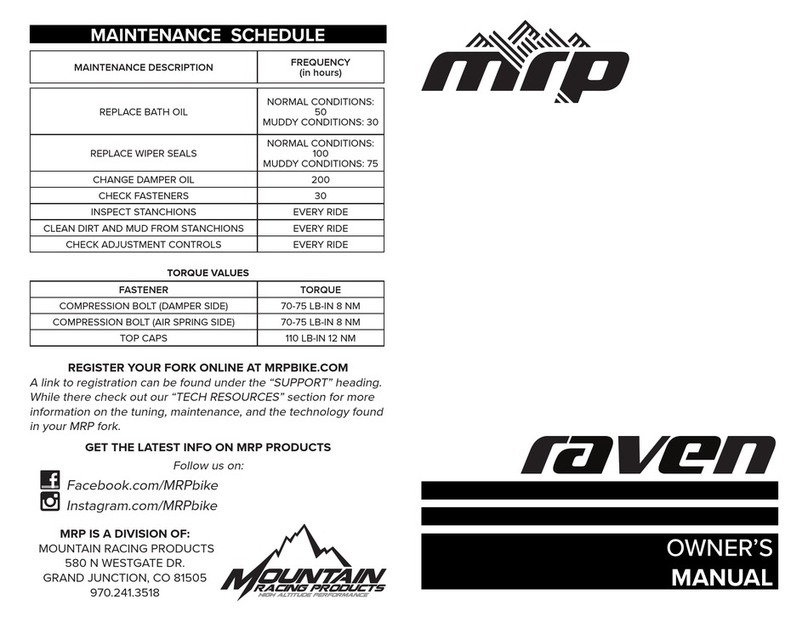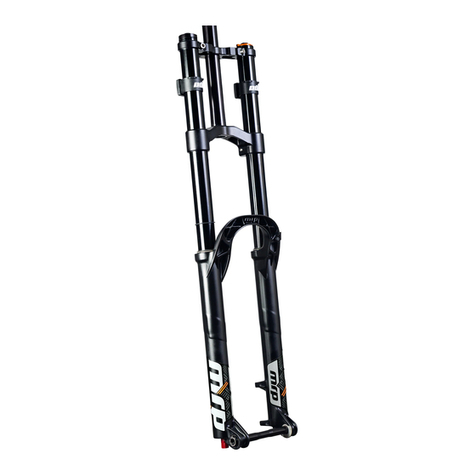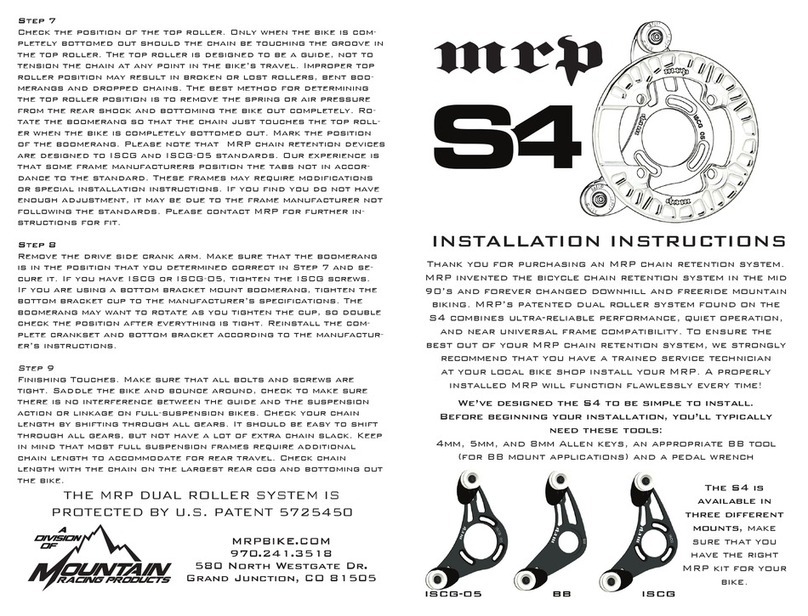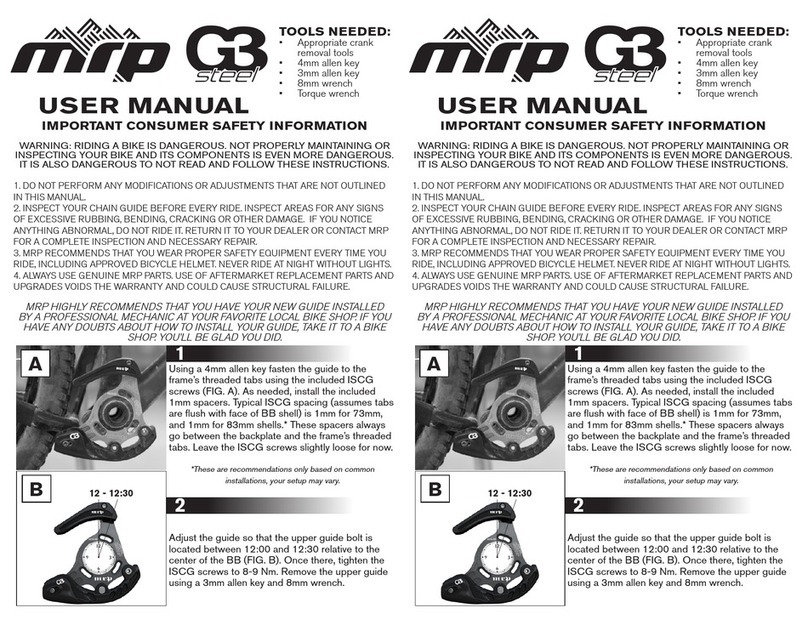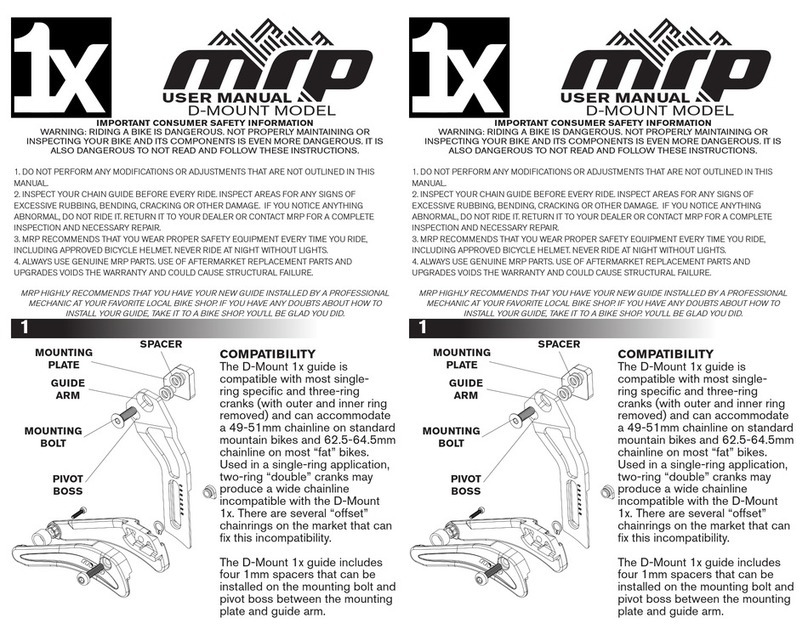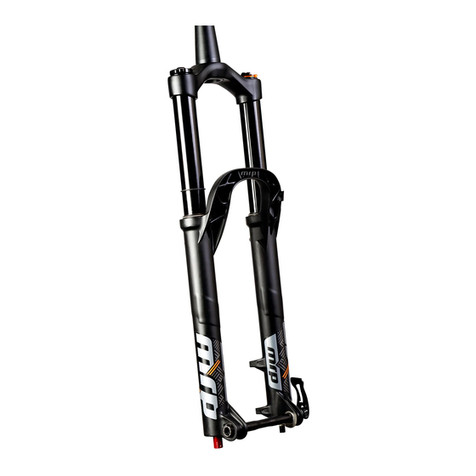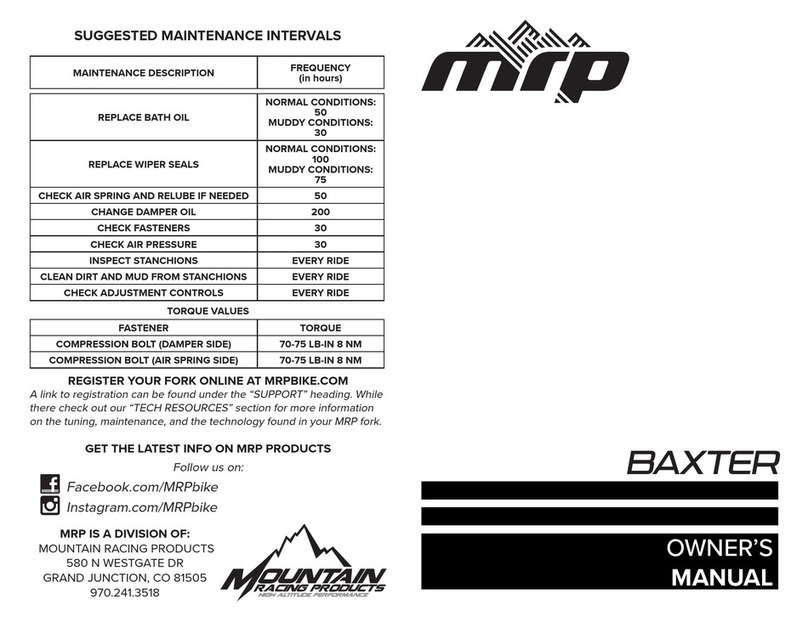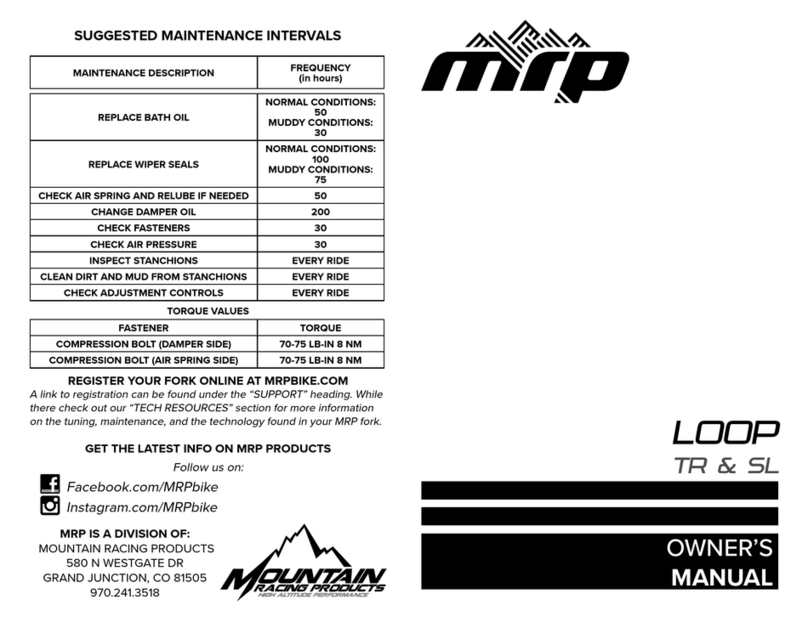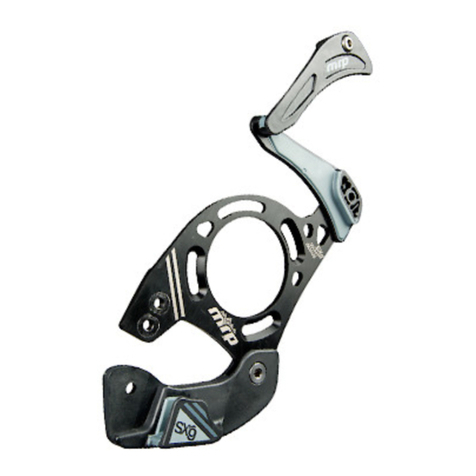REBOUND
The rebound adjustment controls the speed with which the
shock will return to its initial extended state after being compressed
by an impact. If the rebound adjustment properly set, the rear wheel
should keep maximum traction by tracking the ground without
catapulting the rider o the bike.
gets too slow, the shock absorber will not have time to returne to its
initial position when a series of close bumps is encountered. In this
case, the bike will run out of travel (packing), possibly bottoming out,
and may give the impression of the compression being too soft. When
the rebound adjustment is set too fast, the rear end of the bike will kick
and move from side to side after hitting a series of close bumps and
the rider will feel catapulted by the bike.
To increase the rebound damping, thus making the shock
return slower upon an impact, turn the rebound adjustement
clockwise (screw in). To reduce the rebound damping, thus making
the shock return faster upon an impact, turn the rebound adjuster
knob counterclockwise (unscrew). The rebound adjustment range is
appoximtely two complete rotations.
If you cannot achieve appropriate rebound speeds, a change
to the internal shimstack may be needed. Contact MRP if this is the
case.
IMPORTANT NOTE:
MRP’S REBOUND VALVING IS TUNED IN SUCH A WAY THAT IT PROVIDES MORE
DAMPING (SLOWER RETURN) WHEN DEEP WITHIN THE STROKE TO PREVENT THE
RIDER FROM BEING CATAPULTED OFF THE BIKE UPON MAJOR IMPACTS.
LOW-SPEED COMPRESSION
The low-speed compression adjustment controls the damping
level (resistance) for slow movement of the shock’s shaft (low velocity),
such as under pedaling, when cornering and when preloading the
suspension for jumping. The low-speed compression damping level
provides the overall stiness feeling of the bike’s suspension, making it
either plush and comfortable or firm and fast rolling.
You should start in the middle of the adjustment range
(approximately 15 clicks
back
from max). To adjust properly, turn the
adjuster one click at a time and take a test ride. The adjustment is
more sensitive towards the max position (firmest). When the low-speed
not to damage your frame, and also for frames that require dierent
mounting hardware sizes for each end of the shock. For three piece
hardware, start with the steel sleeve and insert it through (the correct
side) the bushing in the eyelet and center it on the eyelet as best as
you can. Take the frame spacers and insert the provided seals into
the flanged side of the spacer. With the seals installed slide the frame
spacers over the sleeve so that the seal rests against the eyelet of the
SPRING REMOVAL & INSTALLATION
To remove the spring, start by turning the preload adjuster ring
counterclockwise to remove all preload until the spring become loose.
Push down on the spring retainer clip then slide it o the shock, being
careful not to damage the shaft with the sharp sides of the spring clip.
Once the clip is removed, you can slide the spring o the shock.
IMPORTANT NOTE:
ALWAYS MAKE SURE THAT THE END OF THE SPRING’S COIL IS ALIGNED ON
THE OPPOSITE SIDE OF THE SLOT IN THE SPRING RETAINING CLIP. THIS WILL
PREVENT THE SPRING FROM BENDING THE CLIP.
PRELOAD
Spring preload is the compression applied to the shock’s spring
when at rest, using the preload adjuster ring. The preload adjustment
is used to achieve the optimal amount of sag and proper ride height.
To increase the preload on your spring, turn the preload
ring clockwise. Increasing the preload will increase the ride height,
thus reducing the sag. This will result in a more responsive ride. Be
careful not to apply too much preload. This can cause “coil binding”,
which is when the coils of the spring rub against each other under
full compression. This can damage the spring, the shock, and can be
dangerous for the rider.
To reduce the preload on your spring, turn the preload ring
counter-clockwise. Reducing the preload will decrease the ride height,
thus increasing the sag. This will result in a more comfortable ride.
Make sure to apply enough preload so the spring is firmly held in place
and does not spin freely on the shock.
IMPORTANT NOTE:
IF MORE THAN 5MM OF PRELOAD (5 TURNS) IS NEEDED TO ACHIEVE PROPER
SAG, IT IS RECOMMENDED TO CHANGE TO A HIGHER SPRING RATE. IF SAG
IS NOT ENOUGH WITHOUT ANY PRELOAD APPLIED TO THE SPRING, IT IS
RECOMMENDED TO CHANGE TO A LIGHTER SPRING RATE.
The rebound adjustment on the Hazzard
uses requires a 3mm hex key. You should start in
the middle of the adjustment range, one complete
rotation counterclockwise from max rebound
(fully in). To adjust properly, turn the adjustment
appoximately 1/8 of a turn at a time and take a test
ride. The adjustment is more sensitive towards the
fully in position (slowest). When the rebound setting






